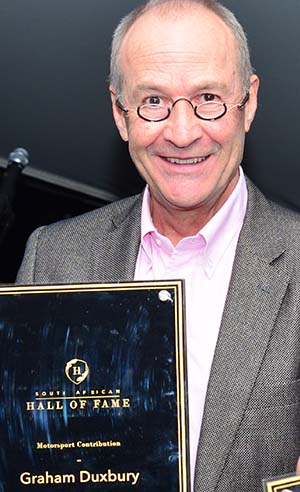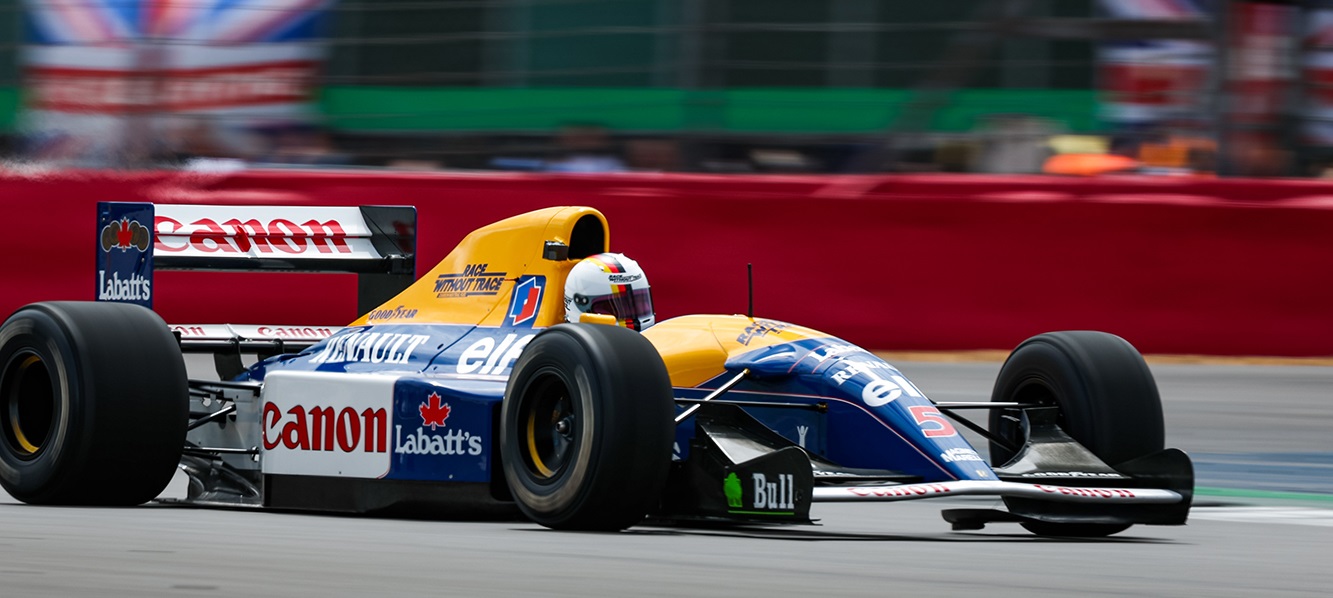Back in the day when Formula One car designers were free to explore the limits of their imaginations, a number of innovative racers were produced.
 By Graham Duxbury
By Graham Duxbury
The list includes the Tyrrell P34 six-wheeler and Honda RA 302 featuring a magnesium chassis and air-cooled V8 engine. Colin Chapman’s Lotus 25, with its monocoque chassis, and his Lotus 79 “ground effect” car are also excellent examples.
But probably the most innovative F1 car ever produced was the one described as “the car that could drive itself”. Or the car that could be driven, as Nigel Mansell suggested, by a trained monkey.
This is the Williams FW14B of 1992, one of the most iconic F1 cars of all time and designed by the most successful engineer in F1 history, Adrian Newey.
The car was planned around the preferences of Mansell, who had shown remarkable speed behind the wheel of the Williams 13B and 14, earlier cars which set the stage for Newey to explore new avenues of design endeavour, particularly relating to aerodynamics and active suspension.
Active suspension permitted the fine control of the cars’ ride height which allowed Newey to optimise the aerodynamic platform – in other words, produce more consistent downforce – thus giving the driver not only more grip in the corners, but more predictability in terms of overall handling.
The 14B was actually envisioned as a stop-gap car, built to test ideas. But it suited Mansell who, according to the team, was able to use his upper-body strength to cope with the abnormally heavy steering caused by aerodynamic load build-up in this pre-power-steering era.
So effective was this car-driver combination that Nigel won on debut at the 1992 South African GP at Kyalami. Concerned about reliability, Newey says there was “much chewing of fingernails and biting of lips” under the highveld sun.
He need not have worried. The team, led by Mansell and backed by Riccardo Patrese, locked out the front row of the grid and finished a commanding 1-2 in the race.
Mansell went on to win the next four races in a row and posted his memorable seventh win in front of a home crowd at Silverstone. He clinched the World Drivers’ Championship with a second place at the Hungarian Grand Prix. With five races remaining in the season and he would end the year with a total of nine wins.
What made the Williams 14B so effective? According to technical director Patrick Head, it was Mansell’s absolute confidence in the active-ride system and his foot-flat approach that made the difference. This despite initial teething problems and sometimes strange suspension reactions which were not welcomed by teammate Patrese who did not display such self-assurance.
From a technical perspective, the active-ride suspension used an oil pump attached to the FW14B’s Renault V10 engine to generate hydraulic pressure in lines linked to the suspension.
The pressure was used to extend or retract actuators on each wheel to achieve a desired ride height – be it under acceleration, braking or cornering.
The secret underpinning Williams’ active ride success was the sophisticated control electronics and software algorithms developed in-house. This permitted the drivers to fine-tune the balance of the car on the move and – in this pre-drag-reduction-system period – lower the rear of the car on the straights in order to stall the diffuser and so gain top speed.
Mansell’s courage, reveals Newey, also allowed him to use this feature on fast corners such as Blanchimont at Spa.
Unfortunately, Mansell departed the team to race in the US and was replaced by Alain Prost who. In 1993, was able to race the evolution of the FW14B – the Williams FW15.
Updates on the FW15 included a new electronically-controlled power steering (as Alain did not possess Nigel’s strength) and electronically-controlled power-assisted brakes incorporating an ABS system.
At the 1993 season’s end Prost retired as a four-time world champion, to be replaced by Ayrton Senna. Unfortunately, it was the end of an era. Sweeping rules changes and Senna’s tragic accident would together leave a lasting legacy, ensuring that nothing in F1 would ever be the same again.

Mansell’s 1992 Williams FW14B is now owned by Sebastian Vettel who demonstrated it at Silverstone this year, thirty years after its magnificent victory in the 1992 British GP. Photocredit: Motorsport Magazine
